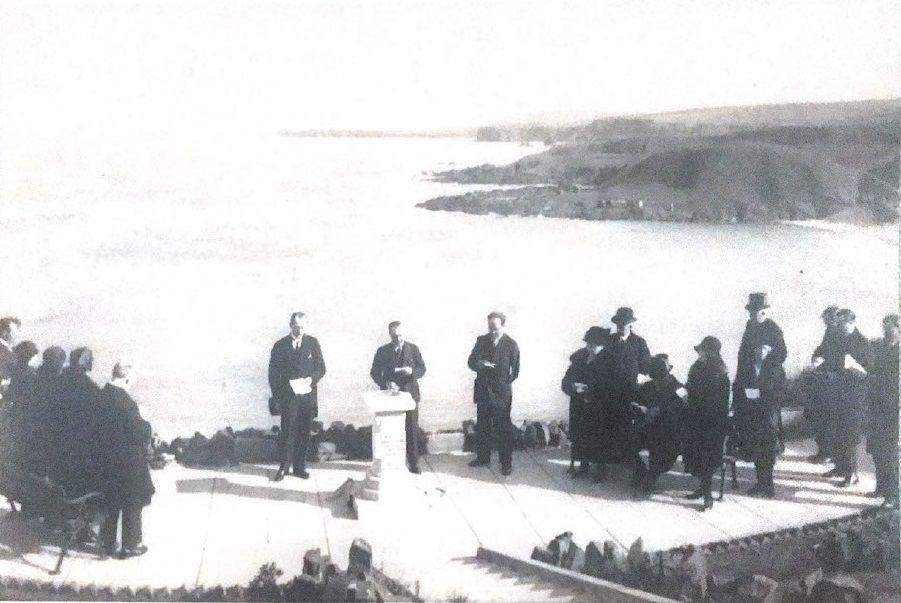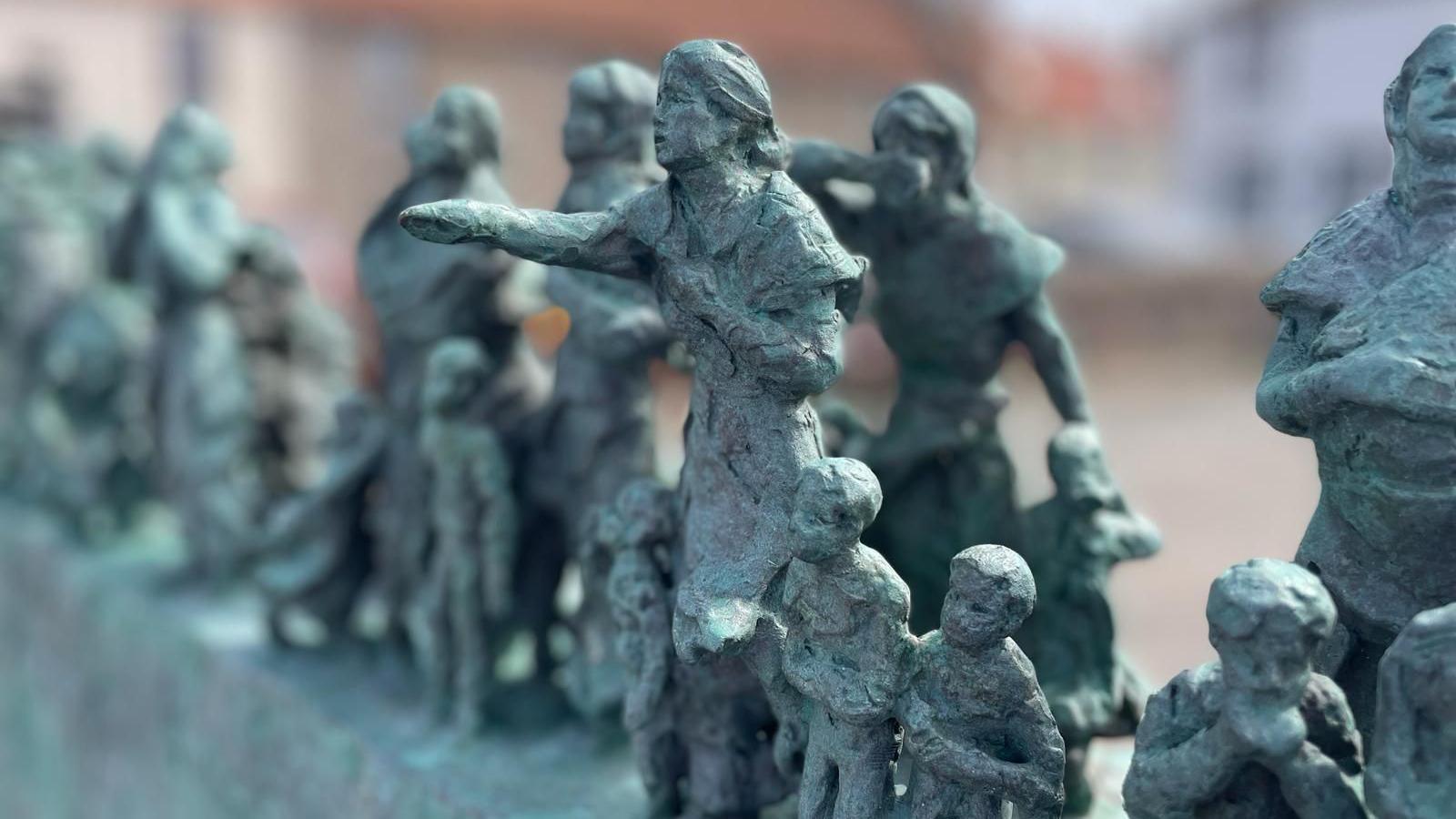Village to honour woman arrested on march for the vote

Isabel Cowe was born into a fishing family on the Berwickshire coast
- Published
A coastal community in the Scottish Borders is to honour a campaigner who fought for women to get the vote.
Isabel Cowe organised and took part in the Scottish Suffrage March from Edinburgh to London in 1912.
A neglected memorial garden in St Abbs, which opened a few months after her death in 1931, is now being refurbished with plans for further sculptures to be added.
Artist Jill Watson said: "Isabel is an inspiration for everyone - if you see something that needs changed, don't just accept it, do something about it."

Noreen Thompson and Jill Watson in the Isabel Cowe memorial garden near St Abbs
Isabel Cowe was the youngest of eight children born into a fishing family on the Berwickshire coast.
Although she did gain a good education, it was the arrival in the area of internationally renowned humanitarian activist Jane Hay which provided the biggest influence on her civic campaigning.
Becoming close friends, they both joined the women's freedom league, and together were instrumental in St Abbs having its own lifeboat.
Noreen Thompson, who is a descendent of the Cowe family, said: "Some of Isabel's brothers and uncles had been lost at sea, so having a lifeboat meant a lot to her.
"Along with her great friend, Jane Hay, they managed to get the first lifeboat for St Abbs.
"Isabel did a lot for the community, and urged people in St Abbs not to just accept things that she thought was wrong."

Noreen Thompson is part of a the Isabel Cowe remembrance group
Isabel and Jane helped organise the 1912 Scottish suffrage march from Edinburgh to London, an effort to increase pressure on the government to allow women the vote.
To attract more support and additional signatures for a petition, Isabel often cycled into outlying villages as the campaigners closed in on Downing Street.
While in the Surrey town of Egham she was arrested for cycling on a pavement - an incident which has been commemorated in an animated video by artists Jenny Lockyer and Matt Foster along with Egham schoolchildren.
Allow YouTube content?
This article contains content provided by Google YouTube. We ask for your permission before anything is loaded, as they may be using cookies and other technologies. You may want to read Google’s cookie policy, external and privacy policy, external before accepting. To view this content choose ‘accept and continue’.
Isabel is listed as one of six marchers who completed the entire 400 miles from Edinburgh to London and were met by 5,000 sympathisers in Camden.
Although the suffragist march, petition and demonstration had little impact on Prime Minister Herbert Asquith, they did maintain the momentum for future suffragette protests that would eventually lead to most women gaining the vote six years later.
Noreen added: "Isabel was a very special person.
"She gave up a considerable amount of her time and energy to make sure women got the vote.
"It is really important that we recognise the contribution she made."

Isabel Cowe at The Haven above Coldingham Bay
Even after women were given the vote, Isabel maintained her campaigns for equality as well better services in the villages around her home overlooking Coldingham Bay.
She led protests against paying parish rates until sanitary arrangements were improved and hosted regular fundraisers to support causes such as the Nursing Association, Edinburgh Royal Infirmary, and the Children's League of Pity.
After taking ownership of The Haven guesthouse following the death of Jane Hay, she continued to offer refuge for women and girls who had fallen on difficult times.

The opening of the Isabel Cowe memorial garden in 1931
Following Isabel's death in 1931, hundreds of mourners from around the country converged on the lawns at The Haven for the scattering of her ashes.
Public subscriptions for the creation of a memorial garden also came from across the UK, allowing for a marble-columned sundial, ornamental seating and vases to be placed within a rock garden setting beneath The Haven.
A formal opening was attended by dozens of friends, supporters and dignitaries.

A bronze design of Isabel Cowe which will enhance the memorial at St Abbs
An exhibition charting the life and achievements of Isabel Cowe was held prior to the pandemic.
More recently, author Iain E Brown published the biography, Isabel Cowe: Shore Gull and Suffragist.
Supporters have now repaired areas of the original memorial garden, and they have added information boards depicting the life and achievements of both Isabel Cowe and Janet Hay.
Sculptor Jill Watson, who created the Widows and Bairns fishing disaster memorials along the Berwickshire coast, has also designed plaques to be added to the refurbished memorial garden.

Sculptor Jill Watson at The Haven
Fundraising is ongoing for a replacement sundial centre piece.
Jill said: "I only learned of Isabel's story when I was approached to help restore the sundial.
"She wanted to change things and make life better for everyone.
"She did so much in her life to help others - we must keep her memory alive."
Related topics
- Published12 May 2024
